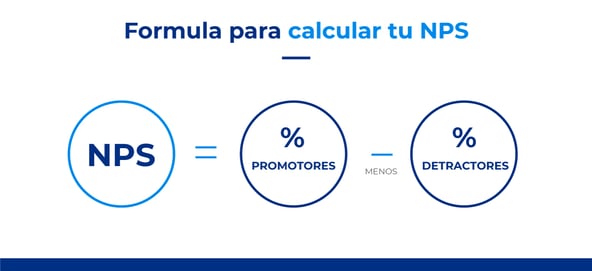Index Content
The Net Promoter Score (NPS) has become a universal measure of customer satisfaction. Thousands of companies in different industries use NPS as a key indicator of their ability to build customer loyalty and are working hard to improve it.
At the end of the day, it's true what HubSpot says: "the biggest threat to your business is not the competition, it's the poor customer experience".
what is NPS?
The Net Promoter Score or NPS is an easy way to measure customer satisfaction that a large number of companies have adopted as their primary KPI (Key Performance Indicator) to monitor over time their ability to satisfy and retain customers. It is a metric that measures the loyalty of a company 's customers based on the likelihood of recommendation.
As a measurement system, NPS has a single objective: to discover how likely a person is to recommend a brand, company, product or service to another person.
To achieve this, the Net Promoter Score is based on the formulation of a simple question to the customer, which may vary, but will always keep the same essence: "How likely are you to recommend the product or service to a family member or friend? The answer is indicated on a scale of 0 to 10: 0 means "Very unlikely to recommend it" and 10 means "Would definitely recommend it".
Depending on the response of each user we could classify them into three categories:
- Promoters: people who have answered 9 or 10. They are very satisfied customers and therefore loyal to the brand.
- Passive or indifferent: people who have answered 7 or 8. They are satisfied customers but not loyal, so they are likely to go to the competition.
- Detractors: all the others, people who have answered between 0 and 6. They are dissatisfied customers who may be part of a negative word of mouth.
Once we have made this classification, we can move on to calculating our NPS.
how to calculate our NPS (Net Promoter Score)?
After the classification of our customers, we must follow two important steps to calculate the NPS:
- Convert the number of promoters and detractors into percentages, without taking into account the passive ones.
- Subtract the percentage of promoters from the percentage of detractors, both divided by the number of customers responding to the surveys (P+N+D). The result is what is considered as the NPS percentage.

The maximum NPS would be 100 (all customers are promoters) and the minimum, -100 (all are detractors). Normally, a Net Promoter Score above 0 is considered a good result, and one above 50 is excellent. We can also use this indicator to compare our company with others of the competition or to see the evolution over time.
As you may have noticed, the Net Promoter Score is not symmetrical: there are many more possible answers for "detractor" than for "promoter". To be a promoter, a person must have answered one of the two highest scores, 9 or 10. On the other hand, we consider detractors all those who have selected one of the 7 lowest scores (between 0 and 6). This is done to correct the natural courtesy bias that people have, our tendency to give answers that please our interlocutor.
want to know some tips to improve your Net Promoter Score? Click here.
To get more information from this metric, we can add an option for customers to justify their response with a comment, so in addition to the raw number, we can get valuable qualitative information about why customers are satisfied or dissatisfied.
Advantages of NPS
It is a very simple metric both to obtain and to interpret. This makes it easy to implement in customer loyalty and satisfaction improvement initiatives. Thanks to its simplicity, it allows us to compare our results more easily with those of the competition and thus establish periodic controls and see how it is evolving.
On the other hand, it is very comfortable and easy to understand for our users, which will stimulate their participation in these surveys and, nowadays, we can obtain the information through almost any means of contact: in person, by email, on social networks, telephone surveys, messaging services, so it will be much easier to reach our customers and easier for them to respond.
For several years now, the Net Promoter Score has positioned itself as one of the most important customer satisfaction and loyalty surveys for companies, in any business sector and anywhere in the world.
From large corporations such as Microsoft, Amazon, Apple, Google and Facebook to companies such as HubSpot, they use the Net Promoter Score to grow and improve organisationally and commercially.
The objective of the Net Promoter Score is not to judge the client, but to re-evaluate our own processes, services, products, strategies, resources, content, actions, etc. Only in this way, under an objective evaluation, can we take action to improve our strengths and solve our weaknesses.






